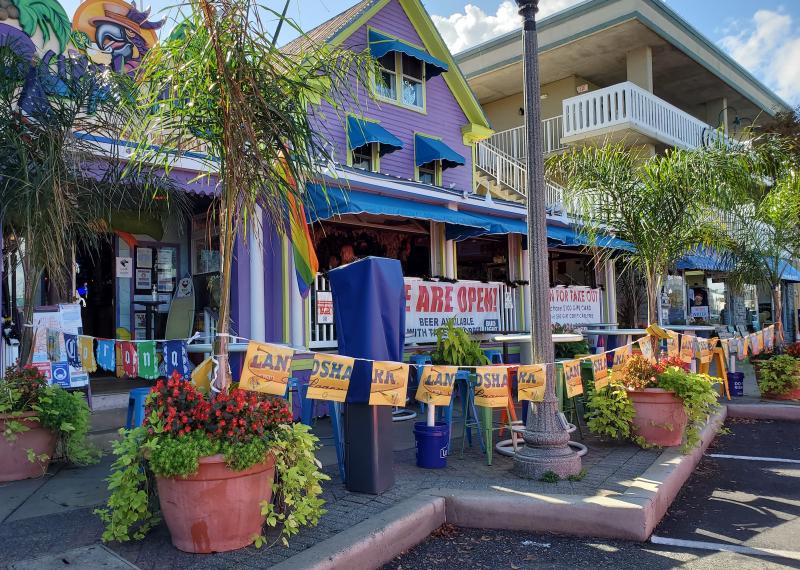Street cafes in Rehoboth Beach – now or later?
In advance of commercial district barriers being removed Nov. 2 in Rehoboth Beach, commissioners have approved outdoor dining rules for restaurants that want to use the city’s sidewalks through the remainder of the pandemic.
Now, some commissioners are saying restaurants that have the means to meet city standards should also be able to have outdoor dining in the city’s parking spaces after the barriers are gone.
For weeks, in addition to passing sidewalk dining rules, commissioners have been discussing the possibility of allowing restaurants to use parking spots as outdoor dining spaces. They had been calling these areas parklets, but Mayor Stan Mills began the city’s weekly COVID-19 meeting Oct. 20 by saying he didn’t like the word, and he would prefer the areas be called street cafe or sidewalk cafe.
Heading into the recent meeting, the general consensus among city officials was the cafe option would be available for restaurants beginning in spring 2021.
Describing the group as moving at a snail’s pace, Commissioner Richard Byrne said he had participated in a recent Rehoboth Beach Main Street meeting, during which restaurant representatives said they want guidance right now so they can begin planning. There might be some restaurants that try and get a cafe going in November, said Byrne.
Commissioner Edward Chrzanowski supported Byrne, saying he would like to give restaurants the cafe option as soon as possible. If the weather cooperates, some restaurants could have six weeks added to their season, he said.
Commissioner Susan Gay said if standards are in place, restaurants could have as much use of a cafe area this fall as they would in the early spring.
Mills said he was fine with the pace at which the commissioners were moving. The commissioners are looking at all the angles and doing it right, he said.
City Manager Sharon Lynn, who had suggested the cafe dining option run annually, April 1 to Nov. 1, said the city is willing to work with restaurants that are interested in putting out platforms this fall. She said city staff has had trouble getting straight answers from restaurants about their future outdoor dining needs.
There are a lot of unknowns, it’s weather dependent, and there are real safety issues, said Lynn, adding that platforms would have to be portable so plows can remove snow when needed.
The city installed the street barriers in early May to allow for outdoor dining and encourage social distancing through the summer months. Lynn reminded the commissioners the reason the barriers are being removed is because the city’s rental contract expires at the end of October. If the commissioners want to keep using them, it’s going to be at the increased rental rate of $100 per barrier, she said.
A significant portion of the discussion during the Oct. 20 meeting was spent on cafe platform specifics. City staff prepared a list of recommendations for restaurant use of public space. Recommendations include using only parking spaces immediately in front of the restaurant, unless it has written consent from neighboring business owners; allowable space usage for one, two or three parking spaces; platform construction requirements; and the approval process.
The construction of barriers separating diners from vehicles is a question commissioners are still grappling with.
As recommended by city staff, a platform would have to be constructed with quality materials, support 100 pounds per 40 square feet and include railings capable of withstanding a 200-pound horizontal force.
Chrzanowski questioned how the city could measure the force.
Mills said restaurants will have to use materials designed to meet those specifications.
Ultimately, at Lynn’s suggestion and in time for the city’s next COVID-19 meeting at 3 p.m., Tuesday, Oct. 27, the commissioners tasked city staff with asking restaurant representatives what they think their needs are going to be if the barriers are removed the first week of November.























































